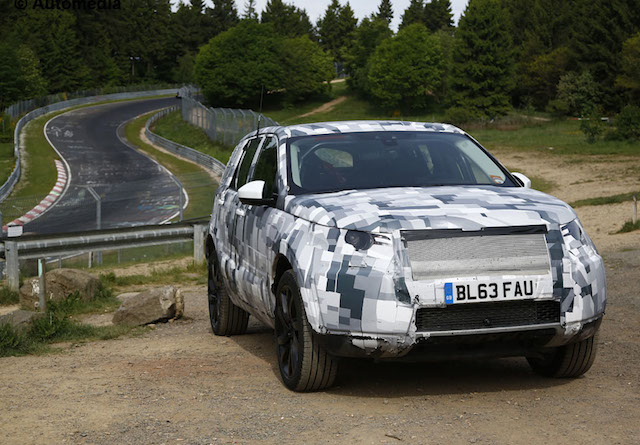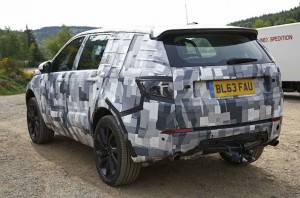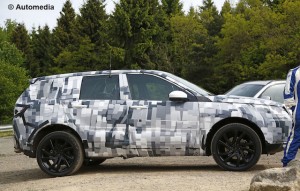
Land Rover has moved its prototype Discovery Sport fleet away from the icy test tracks of Scandinavia to the Nurburgring circuit in Germany as it counts down to the likely debut of the new model at the Paris motor show in September.
The Discovery Sport (above) replaces the Freelander as the company puts in place a new three-tier product family: ‘luxury’ Range Rover (including Evoque); ‘leisure’ Discovery; and ‘dual purpose’ Defender.
When first spied it was called the ‘baby’ Disco because it was smaller than the regular Disco and larger than the Freelander. The redesigned crossover is seen here parked near the Jaguar Land Rover test facility at the Nurburgring.
It is indeed larger than the Freelander and is based on the same platform that underpins the five-door Range Rover Evoque. The regular Discovery will share its aluminium underpinnings with the Range Rover. The new Defender family isn’t expected to be seen until 2016.
The photos here show the Discovery Sport appears heavily influenced by the Evoque and Range Rover Sport. As a result, it has a prominent grille flanked by sweptback headlights (just visible under a mass of duct tape and camouflage), a sloping roofline, tailgate-mounted spoiler and dual exhaust system.
It is likely to be available with two drivetrain options: two-wheel and four-wheel drive. Land Rover first offered two-wheel drive in the Freelander range and the option is expected to be extended to other models.
Engine options for the Disco Sport are unclear. Will Land Rover carry over the boosted four-cylinder petrol and diesel units from the Evoque, or use the new family of Ingenium four-cylinder powerplants it has developed with Jaguar at a cost of roughly $NZ1 billion?


